Compressors are categorized using different parameters such as frame type, horsepower or tank size.
For this discussion, we will look at one-stage and two-stage options, and which one is best for the average garage.
What causes confusion when categorizing the compressors is the difference between the working principle and construction between single-stage and two-stage compressors. Understanding the difference between the two will allow you to choose the best fit for your needs.
Often, both single-stage and dual-stage compressors have two pistons. It takes a little bit of “insider knowledge” to differentiate them.
See Related: How Does An Air Compressor Work?
In a hurry? Quick Links:
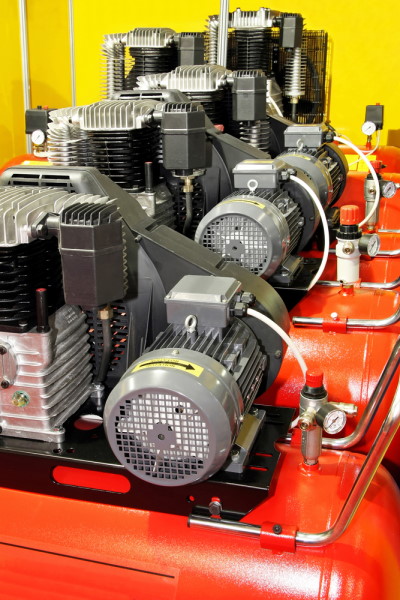
Compressor Pump Difference
The difference between single and two-stage compressors is that two stage compressors will compress the air twice.
This allows the air to be mostly compressed in the first stage, and then highly compressed in the second stage.
To tell them apart, one of the most noticeable features is the cylinder head shape. The cylinder head holds the piston. For a single-stage compressor, the cylinders are the same size, while for the two-stage, one is visibly larger.
The smaller one is the higher pressure cylinder, and the larger one the low-pressure cylinder.
The double-stage compressor is better suited for factory applications and for woodworking where a large number of hand tools are running simultaneously. Single-stage compressors are useful for the application of less than 100psi for example, such as in construction or for a personal garage.
Single-Stage Air Compressor
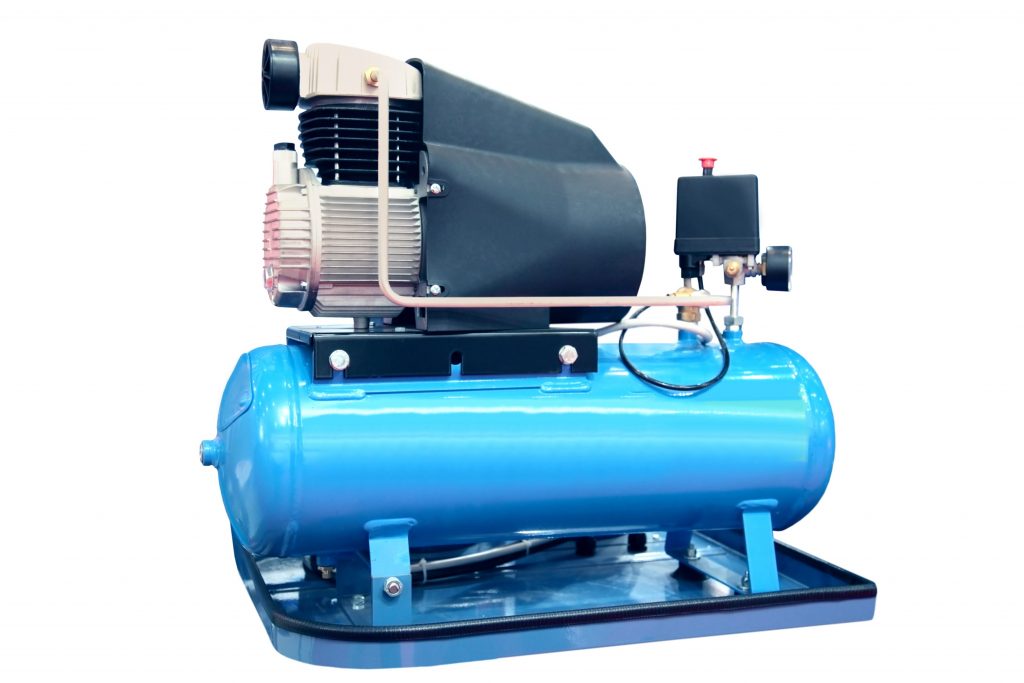
The main difference between single-stage and double stage compressors is in their performance. To have a clear understanding between the two, we will look into how each works.
- The single-stage compressor sucks air into the compressor through the filters. When the piston moves down, the inlet valves open to allow air into the compressor cylinder.
- After drawing enough air into the cylinder head, the inlet valves close and the piston compresses the air.
- The movement pushes the pressurized air, about 110psi (Although sometimes as high as 145psi), through the exit valve into the storage tanks for later use.
Two-Stage Compressor
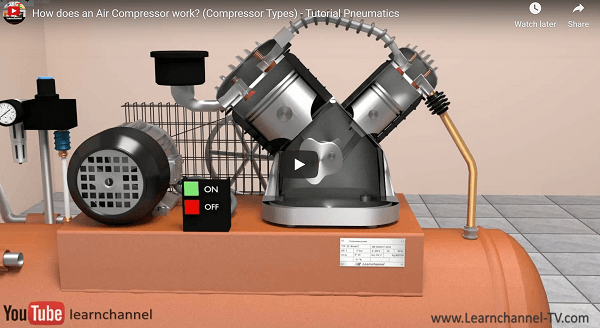
The process of sucking and compressing air is the same as the single-stage compressor, but the compressed air goes through a second compression.
This means in the double stage compression; the compressed air is not discharged for storage but goes through another phase of pressurization. After the first compression, the compressed air is compressed a second time by the small piston in the second cylinder. From this process, the air is twice-pressurized to around 175 psi.
The double-pressurized air moves into storage tanks for use as needed.
The outside diameter of the second cylinder is smaller than the first cylinder.
(If you are looking at a unit with two cylinders, but they are of the same size, then it is a single-stage compressor. )
The difference between the single and dual-stage is not in the number of cylinders but the number of times it processes.
A single-stage compressor can have two cylinders to create a higher volume of air. The dual-stage compressor has a shorter piston in the second cylinder.
Before the second-stage compression, a charge air cool pipe connected to the compressor cools the compressed air.
The dual-stage compressor has six components from the air intake valve to the discharge outlet.
- The inlet valve sucks air into the compressor from an external source. The sucked air moves into the cylinder for compression.
- In the cylinder, there is a piston to compress the air. The piston move up and down inside the cylinders. In the downward movement, the air is sucked into the cylinder while in the upward motion it compresses the air.
- The connecting rod moves the piston and connects the crankshaft and the piston.
- The dual compressor intercooler cools the compressed air from the low-pressure cylinder before it is sent to the high-pressure cylinder.
- The double compressed air discharges through an outlet valve into the storage valve for use when needed.
The difference in Discharge Temperatures of Dual Stage Compared with Single-stage?
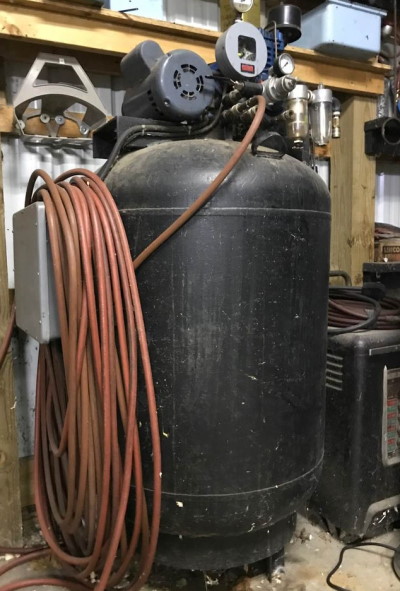
The main difference between the dual and single-stage compressor units is in the performance of the compressor pump. The single-stage compressor compresses air in one movement of the piston in the cylinder head. The two-stage compressor double compresses the air in the larger tanks and smaller piston cylinders.
The dual stage-discharge compressed air temperature is relatively lower than the discharged air from the single-stage compressor.
The double-stage compressor has an intercooler charge pipe that cools the air after the first compression before sending it to the high-pressure cylinder.
Additionally, compressing air in one stage from ambient to 145 PSI will create more heat compared to compressing it in a smaller ratio from 90 psi to 145 psi.
Is Single-stage More Reliable?
The single-stage compressors suction air into the cylinder and compresses it in one stage. The air is compressed to 120 psi (8.2 bar) before it is stored.
Single-stage compressors are used for intermittent use and for are not reliable for continuous (Manufacturing) use. They need periods of rest to cool.
The reliability of single-stage compressors is dependent on their installation conditions, maintenance practices, and the application of the compressor itself.
Both a single-stage or a dual stage compressor should last for 20,000 hours of use.
Is Single-stage Compressor Cheaper?
Single Stage models are cheaper compared to dual-stage compressors. The initial purchase price and transportation cost are lower as they weigh less and draw lower electric power. You can buy the single-stage unit if you are on a tight budget.
The two-stage compressors are used frequently, they are energy efficient, are easier to use and use natural gas and electricity to operate. In areas without electricity, gasoline can be used.
Two-stage compressors are often used for medium-sized shops who cannot yet afford a commercial rotary-vane compressor.
Which Role Is Best for Each?
Single-stage compressors are suited for small workshops and home. They last longer when you don’t overuse them.
Pancake compressors are single-stage. So are most compressors up to about the 60 gallon size.
For commercial use, the double stage compressors are more reliable and give more compressed air to meet your needs.
Single-stage Use Types
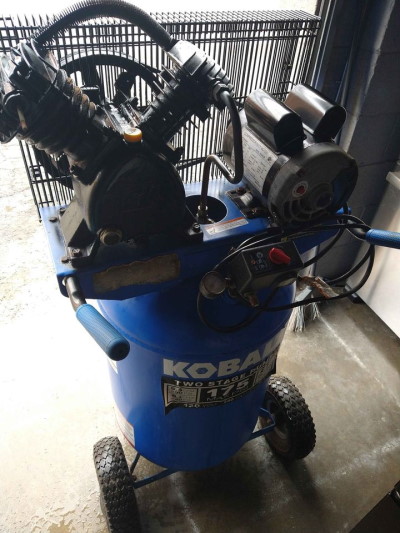
Dual-stage compressors are more reliable and most preferred for heavy-duty work scopes that require large amounts of highly compressed air.
Single-stage compressor still has its uses and used for light duties and discontinuous air tools with pressure requirements of less than 100 psi such as individual craftsmen.
For light applications, the single-stage compressors will help increase your production, increase production and efficiency.
For individuals doing sheathing, frames, roofs or trimming work, the single-stage compressor is ideal.
Two-stage Use Types
For heavy application use of pneumatic power tools, double stage compressors are a great choice in auto manufacture and repair garages. The dual-stage compressors are ideal for large applications that require highly pressurized air for extended periods.
The double-stage compressors have the advantage of driving heavy-duty applications. You will generally need a 240v power supply, or at least a 20 amp 120v power supply. They generally are oil-filled compressors that will need the oil changed twice a year.
They have the disadvantages of using more power to operate, need additional cooling, and the cost for installation is high as compared to single-stage compressors.
They are heavyweight and loud.
The two-stage compressors are used in:
- In production plants such as textile, plastic, fertilizers and chemical industries.
- Also used in blowing, spray guns and other pneumatic powered tools.
- Cabinet and woodworking shops
- Autobody shops
Running a higher pressure rating throughout your shop, may require steel piping which can further increase installation costs.
Having a compressor that fits your needs, increases the plant’s efficiency, reduces costs, maximizes returns and reduces overall costs.
 Skip to content
Skip to content

